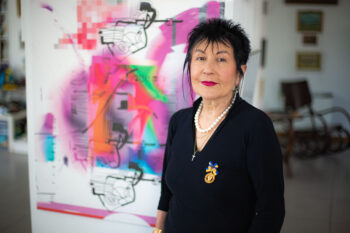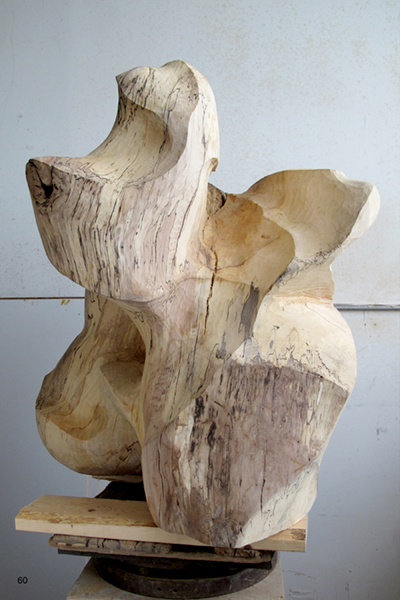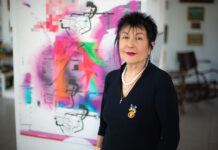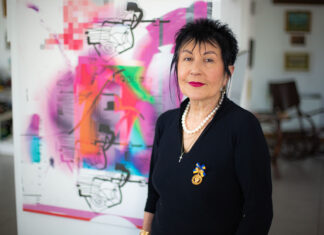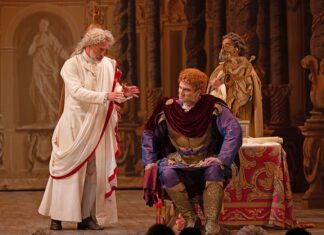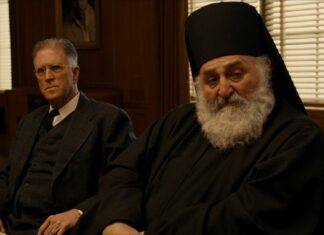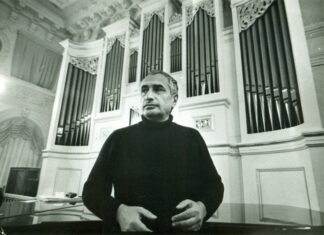By Arpi Sarafian
Special to the Mirror-Spectator
While quintessentially “Kardash”ian in its focus on the effort to create an alternative world, COLLABORATION, the latest in the series of Kardash Onnig’s ongoing Baraka Project, is also delightfully playful and colorful, attributes one does not typically associate with the artist’s work. The reproductions of the vividly colored pages of the children’s books — which Onnig, in collaboration with Vazo, an artist friend from France, salvaged from recycling bins, whitewashed “blank” and gave to children to draw and color, to “in effect start a new book” — put the spotlight on the children who, by the artist’s own admission, have become central to his creativity.
The book gives the reader a wonderful feeling of lightheartedness. One turns its pages in anticipation of yet another pleasing image of the artwork of the children it celebrates, or of the toys, the making of which has taken center-stage in the artist’s creative endeavors. A yellow zebra with blue stripes, an orange dragon, a sparkling unicorn, a green sea turtle . . . all burst with color and ingenuity. Making toys is “rewarding, fulfilling,” confesses Onnig. Indeed, “We The Children” give the artist hope for the future of mankind: “I have given up on grown-ups and instead concentrate on helping children.” Onnig is eternally optimistic and has unwavering faith in his vision of a more humane and compassionate world.
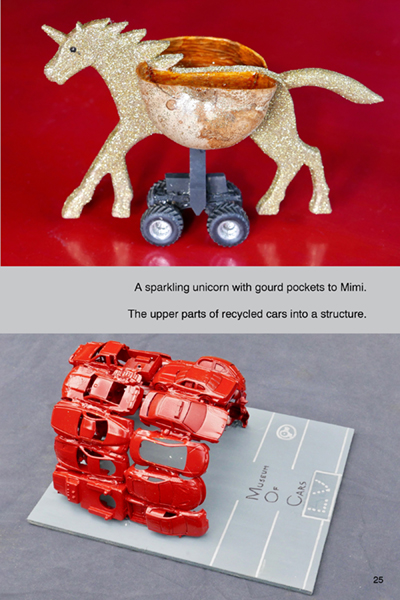
The handsome little volume also features the artist’s latest creations. The photographs of the “new finished work” Onnig has carved from a large beech chunk are incredibly appealing. Interspersed throughout are the reflections of artists of different backgrounds on their lifelong relationships with Onnig. The exchange between Onnig and Uli Boege, a friend artist of German descent with whom Onnig has enjoyed 53 years of intellectual collaboration, is especially illuminating. The two pals’ extreme positions on the women’s movement, on Nietzsche’s Dionysian Vision of the World and on much more, invite the reader to explore her own views on these controversial issues. Also included are short narratives of “a quintessential moment,” a unique personal experience the artist has asked visiting women to share “as part of an ongoing study to better understand the concepts of spirit and soul.”
With the Baraka Project, Onnig extends the concept of creativity into his collaborators whose very willingness to contribute evidences the respect they have for a guy that some dismiss as a “lunatic” with an unattainable vision of an “impossible” world. With his initiative, the artist aims to “connect people and experiences across the nation and internationally.” “It is an honor to have been selected as a visiting artist-in-residency at Baraka Center for 3-D Experimentation,” writes architect Nathan Williams whose work explores the African diaspora process. “Baraka is a space for simultaneous living and giving, creating and sharing,” he adds. All value the guidance Onnig provides and all claim to “learn from Kardash Onnig.” ”Onnig is a master . . . I consider him a mentor, despite all his resistance to such titles,” writes Gregory MacAvoy, a sculptor from Brooklyn, NY, in his musings “On the nature of collaboration.”
